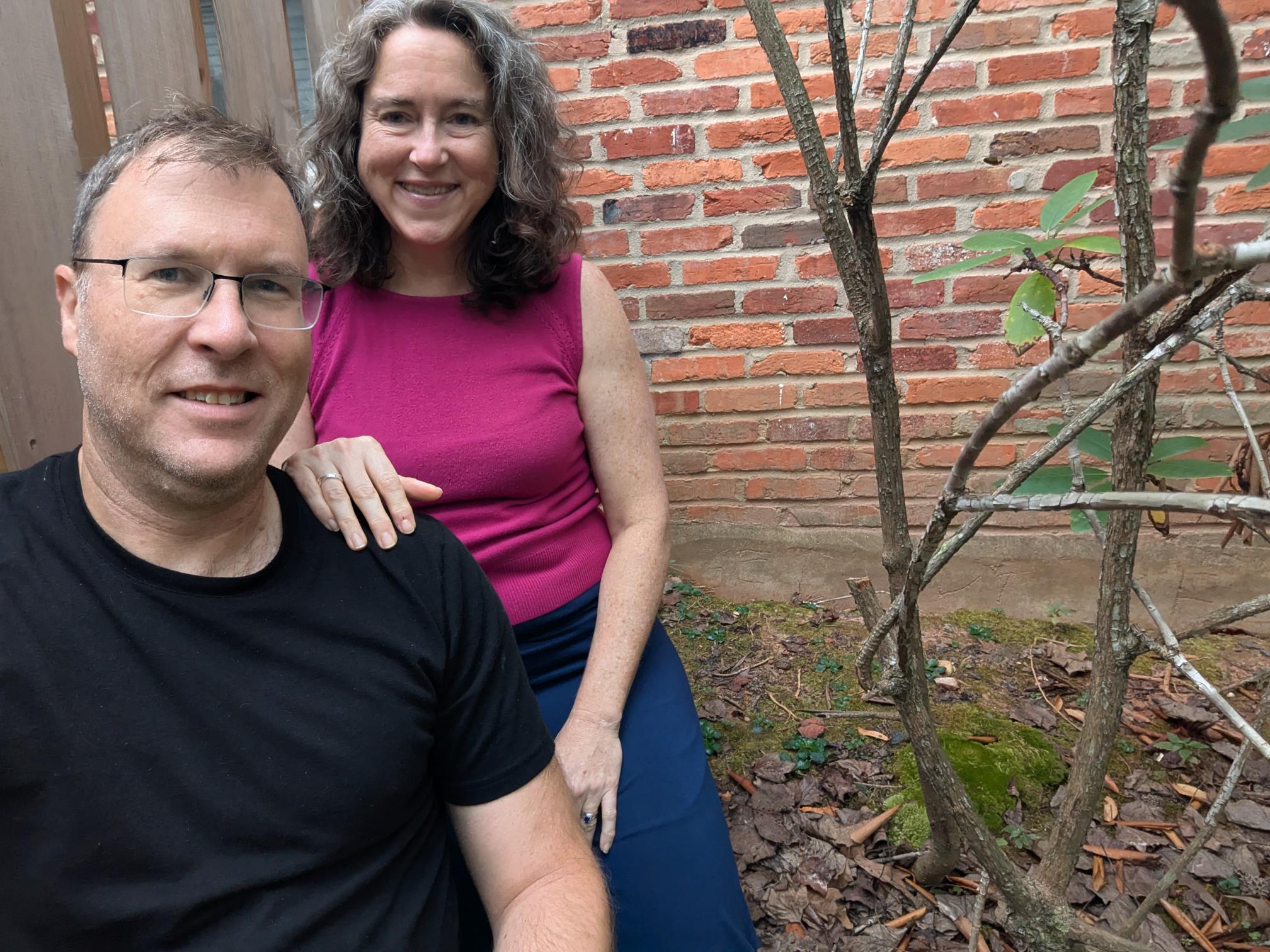Home improvements made years ago uncovered a time-sensitive message that was sweeping the nation in the late 1960s, sparking a Springfield homeowners curiosity which has grown through the years.
Years ago, when a gardener cleared some weeds and shrubbery in a garden off Old Keene Mill Drive the
 Robin and Doug Campbell near the spot on the wall that is now part of family lore
Robin and Doug Campbell near the spot on the wall that is now part of family lore
“What was he thinking when he carved it? I would love to know,” she wondered.
Campbell’s house was built in 1968, an intense year in the Vietnam War. Teens all over the country were being drafted, the Tet Offensive was a big item in the news, protesters were everywhere and the United States suffered nearly 17,000 casualties making it the most costly year in the whole war. On Jan. 31, 1968, 246 Americans were killed in action that single day while Richard Nixon preached “Sock it to Them,” on the campaign trail.
Somewhere in that time period, the construction worker on the job in Springfield felt these events were big enough to etch his feelings on a wall that would be covered by vegetation. In 1968, Campbell had not been born yet but her parents were well aware of the anti-war sentiment that was present in the young people’s minds so they looked at their options and moved to Canada.
Campbell’s father was already a Canadian citizen, so he wasn’t in danger of being drafted, but they moved anyway, and Robin was born in Canada in 1971. The family moved to Springfield in 1978 and they bought the house in 1986. Robin went on to graduate from West Springfield High School in 1989. Years later, Robin and her husband bought the house from her parents and her parents moved into nearby Greenspring Village where Robin visits regularly.
Somewhere during this process, her father showed her the message on the wall and explained how he found out about it from the gardener when they first moved in years before. He knew about it before but for some reason he waited to tell her about it. The letters in the message are about six inches tall and the whole thing is about six feet long on the wall.
The message on the wall is still heavy on her mind and she’s toying with the idea to launch her own investigation, possibly digging through records and finding the builders. Did the worker just come back from the war? Was he a protester? Did he have friends that died over there? “What was he thinking when he carved it? I would love to know,” she said.
She looks at the parallels with the protests in the 1960s and the issues today. Whether it’s marching with a sign or discreetly voting for the politician that supports a particular issue, protesting may have a role.
“There are also a lot of ways to protest, and I like the idea of one of the masons working on our house finding a way to make his voice heard, even if no one knew it at the time,” she said in an email.
One clue that it was authentic was the spelling of Vietnam. Now it is spelled as one word, but there was a time when it was “Viet-Nam,” to many and that’s the way the word is spelled in the etching. Google has it “Vietnam,” no dash while Unesco has it “Viet Nam,” but still no dash.
